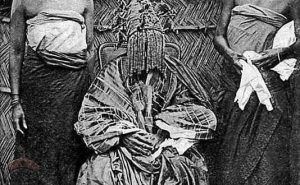You must have heard of people expressing dissatisfaction
about their divinely ascribed gender and seeking to alter it. Most probably,
you have. They are broadly known as transgenders or trans for short. Some of
them go all out to change their biological features to suit their desired
gender identities through medical procedures. These sets of people are referred
to as cross-genders. So, a male would undergo procedures that will make him
physically appear as female. Females do the same too. It’s most common in the
West, but it is increasingly spreading into Africa. Whether you dislike it or
you do not see anything wrong in it, you might be wondering; where and when did
all these begin? Who started it?
Let’s look into history.
The origin of the trans people dates as far
back as 22AD, when Elagabalus, a male Roman emperor sought to be identified as
female. Most likely, there must have been many other people like Elagabalus who
were also not happy with the way they were created. Nonetheless, changing the
physical features and sexual characteristics to that effect was not medically
possible until the 20th century. Dora Ritcher, 1931, a German was
the first known woman to undergo gender realignment surgery. Then Lile Elbe, a
Danish trans man, underwent four operations, concluding with a uterus
transplant which led to her death. There were Karl Baer and Alan Hart who also,
through medical procedure changed from women to men.
America’s Christine Jorgensen underwent gender
affirmation surgeries in 1951 both in Denmark and the US, marking the first
convincingly successful case of transgender in the world. Consequently, Dora
Ritcher was referred to by many as the first person to change alter their
sexual characteristics. The question is; Is that true? What if neither Dora,
Elbe or Hart was the first person to change their sexual characteristics? What if the first cross-gender was not
German? What if gender change began from a Yoruba? These questions would lead
us to one person- Alaafin Ajiun Orompotoniyun.
Orompotoniyun was an Alaafin of the old Oyo
Empire who ruled between 1554 to 1562. Orompoto, as she was called for short,
not only made history for being the first and the last female Alaafin but also
as the first person to change their biological features- the first
cross-gender- in Yorubaland. Orompoto resolutely strived to become Alaafin
after her brother’s (the Alaafin at the
time) short life ended. But her ambition met with stiff opposition as the
Oyo Empire, like most other African societies, was against the idea of having a
female monarch.
Seeing that there was no way she would be
crowned king, she determined to do the impossible. She told the kingmakers that
she would prove to them that she was not a woman but indeed a man, and thus
deserving of her father’s throne. She promised to do this in just seven days.
On the seventh day, she stood before the council of chiefs, who were waiting
for her to fail, to prove her masculinity. Removing her cap, surprisingly, her
head was found neatly scraped.
She went on to remove her top, her breast was
gone! Only a flat masculine chest was all there was to see. Surprised but
unconvinced, she was asked to remove her trousers. And there was it! A long
penis with a pendulous scrotum dangling with two testes. Mysteriously, there
were no traces of surgical wounds on her body. It was believed that she
achieved this through magical powers. At that instance, the chiefs fell on
their faces and recognized her as king. She was later coronated, becoming the
first female to rule as Alaafin in Yoruba history, however in a male body. She
later died in battle in 1562.
If Dora Ritcher and Lily Elbe, who were
regarded as the first set of cross-genders underwent their gender reassignment
surgeries in the 1930s, and Orompoto, a Yoruba monarch crossed her gender in
the 1500s, who would you refer to as the first cross-gender?



